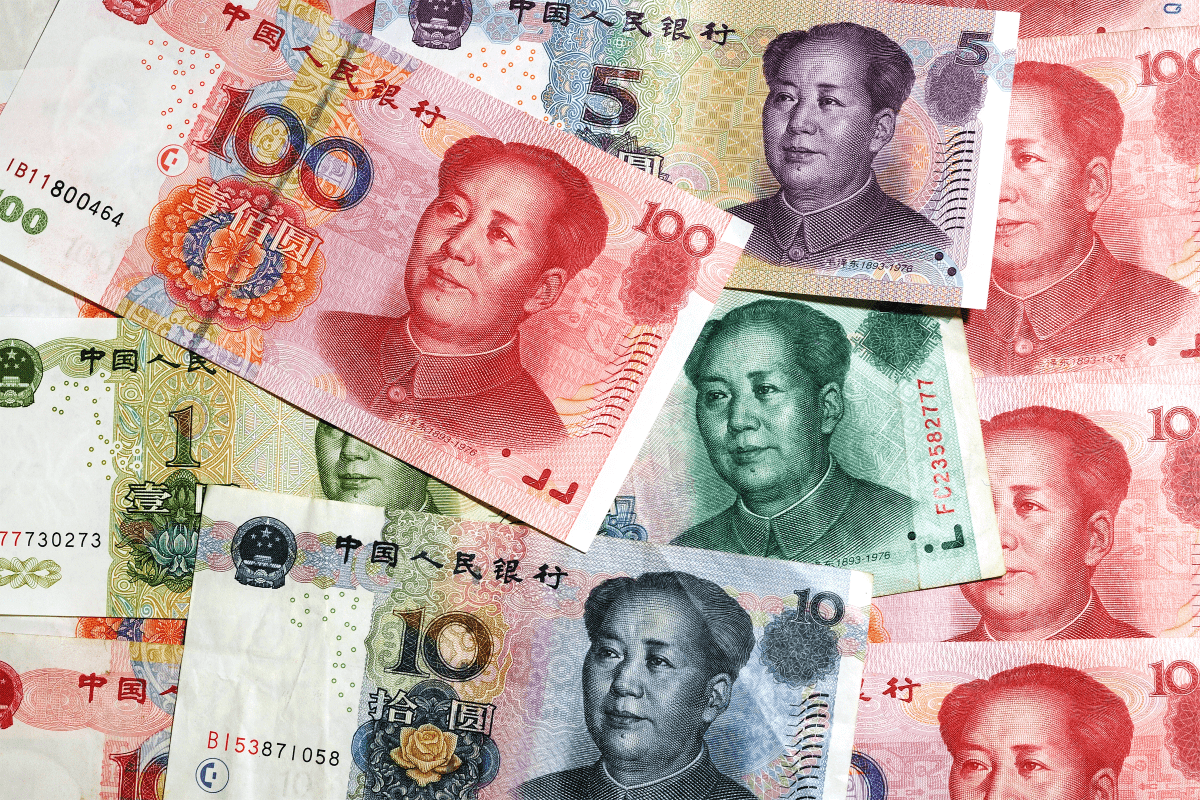China has largely opened its domestic bond market. This market has a volume of around €10 trillion, making it the third largest bond market in the world, after the United States’ and Japan’s. How promising an engagement in this market is seen globally depends decisively on the development of the Chinese currency. Domestic transactions are settled in China’s currency. The majority of domestic bonds are denominated in renminbi.
In 1024 C.E., the world’s first paper money was put into circulation in China to finance a war. It was abolished in 1402 because it was too easy to counterfeit. In Chinese currency, the cash therefore remained the king. 1,000 cash could be exchanged for a silver bar, which varied in size from province to province. In 1889, the currency system was standardized. 1,000 cash became a yuan, a silver coin. The word yuan means ‘round’, referring to the shape of the coin. In 1949, the communist regime introduced the renminbi, simply meaning “national currency”. For the basic unit of the national currency, however, the name yuan was retained. Money is counted in yuan, while the currency is referred to as renminbi.
China and the USA: weaponized currency
Under Mao, China was a closed country. The renminbi was therefore without any value, similar to Eastern Europe’s currencies under communism. The Chinese government also imposed excessive exchange rates on the renminbi. Tourists were given their own foreign money to keep them from purchasing subsidized goods. This also served to prevent the Chinese from purchasing imported goods. With Deng Xiaoping’s reforms and open policy, this system was no longer compatible as foreign trade, i.e. exports, became desirable. The government gradually facilitated currency exchange and adjusted the exchange rate to unit labour costs. In the mid-1990s, the Chinese government finally pegged the renminbi to the dollar. The Chinese currency’s convertibility was thus greatly improved.
The dollar peg had two advantages from a Chinese perspective. Firstly, the binding exchange rate made Chinese companies more reliable investment targets and creditors. Secondly, this led over time to an undervaluation of the renminbi against the dollar. This meant clear export advantages for China. The backdrop to this is that China, as an emerging market, achieved high economic growth. Therefore, an appreciation would have been expected. However, China kept the renminbi pegged to the dollar like an unwanted freeloader. Much of the trade surplus was translated into US government bonds, and China threw yuan into the market. Both cemented exchange rates and export surpluses.
Chinese Currency: From wallflower to?
This course of events also had disadvantages. The huge currency reserves were not available to the population and did not generate prosperity. The low exchange rate was reflected in inflation. Support purchases increased the money supply in renminbi, but growing Chinese productivity brought about rising wages. These rising wages at constant exchange rates eventually led to rising prices. The persistent export surpluses weighed on relations with trading partners, especially the U.S. This trade surplus, which has lasted for years, is one of the reasons for the current trade conflict. In addition, a stronger China is looking to take the lead in world currencies.

China has been making efforts to enhance the importance of the renminbi for some time now. The dollar peg has been loosened since 2010. The government gradually opened the capital markets, which means that stronger capital flows to China can be expected in the future. The renminbi has been included in the International Monetary Fund’s Special Drawing Right basket. These are all steps which could significantly increase the renminbi’s interest as a reserve currency in the future.










 Australia
Australia China
China India
India Indonesia
Indonesia Japan
Japan Malaysia
Malaysia Philippines
Philippines Singapore
Singapore South Korea
South Korea Taiwan
Taiwan Thailand
Thailand Vietnam
Vietnam Germany
Germany Hong Kong
Hong Kong USA
USA Switzerland
Switzerland Singapore
Singapore
 United Kingdom
United Kingdom








